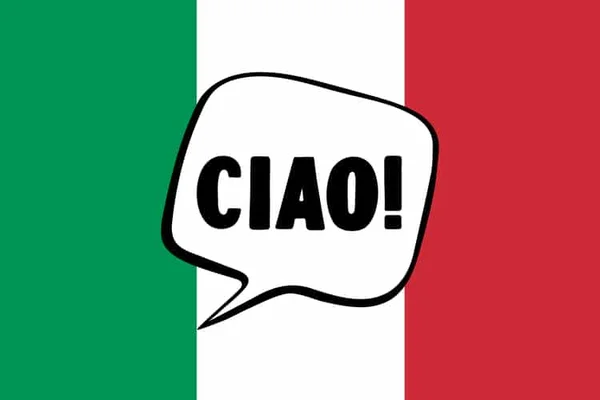
The graphic accent in Italian
One of the things that cost us the most, even in our mother tongue, is the use of graphic accents or tilde. The rush and also the lack of interest lead us to write in a hurry and without paying any attention to what we do. However, if we were aware of the importance of the graphic accent, we would realize how much our writing can change if we stop to use it properly. Today we want to help you if you are studying Italian. It may not be clear to you when and how to use the graphic accent in Italian to write well, like a native speaker. We will help you so that you do not have doubts and so that you know how to use the graphic accent in Italian in the correct way and whoever reads can understand you. Because remember that two identical words with or without an accent can mean very different things.
Types of graphic accent in Italian
In Italian there are two types of accents or graphic accents:
- The grave accent (`)
- The acute accent (´)
The biggest problem with which the student of Spanish can be used is that there is no clear and fully accepted regulation that indicates when one should be used and when the other should be used. Therefore, it is not surprising that you can find a word written with both types of accent, depending on the text and the person who writes it. Do not be scared by that, you will see with the reading that most of the words have their accent used in a specific way, constant reading is what can help you stay with the type of accent or graphic accent that each word uses, but we warn you to keep it in mind if you see different writings.
The only word that does not seem to lead to error or doubt is the word è, the third person of the present indicative of the verb essere, which, as you can see, always carries the grave graphic accent. Also the adverb cioè, its compound.
There is a common agreement, widely used especially by publishing houses, which is to use one or another accent depending on the vowel on which these accents or graphic accents fall. Common uses are:
- Use of the acute accent:
- over all the words ending in -ché , as perché ;
- in conjunction I know ;
- in the conjunction né ;
- in all the numerals ending in –tré , as ventitré;
- in compound nouns whose second element is –ré , as viceré;
- in the verbs of the second conjugation, exactly in the second person singular of the past indefinite: I feared.
- Use of the grave accent:
- on the final vowel –i , like lì ;
- over the final vowel –u , as tribù.
That is, on closed vowels.
However, the study of the Italian language Manuel Carrera Díaz, in his Manual of Italian Grammar , considers that the simplest and best criterion to use would be to always and exclusively use, when it is necessary to graphically accentuate a stressed vowel, the graphic accent grave (`).
Nor is it surprising that you find the circumflex accent (^) to indicate certain vowel contractions, because it was done in the past, although this use has now been discarded.
When to use the graphic accent?
In Italian there are specific rules for the use of the graphic accent or tilde. These are:
- In all polysyllabic words that are acute, such as caffè, città, perchè .. Be very careful, since words that are acute and that end in a consonant as a result of having suffered an apocope (suppression or loss of one or more sounds in word-final position), are not stressed, like amor de amore .
- In certain monosyllable words that, if not stressed, can be read as plain bisyllables, such as ciò, può, già, or they can be confused with other plain monosyllables such as è-e, nè-ne.
It is important to note that even if the word is written in capital letters, this graphic accent or accent is preserved at the end of the word. In this case what happens is that the accent is written as an apostrophe and not above the vowel: CITTA´.
- On certain occasions the graphic accent is used inside words to differentiate homographs, but this is optional, it is not a rule.
In summary…
As we have remarked at the beginning, the only thing that will allow you to use the graphic accent in the best possible way is reading, through which you will be able to see how the accent is written or used in a more generalized way in the different words. It is important that you pay attention and that you also use dictionaries https://examenexam.com/es/es/blog/dictionaries-italiano-espanol since they are a very reliable source and they can help you a lot to clarify with the use of accents or graphic accents in Italian.
In any case, do not rush too much, especially at the beginning of your Italian language studies, since it is normal that you feel lost regarding this subject. Pay attention, memorizing the use of the graphic accent in the most used and necessary words to communicate and little by little you will see how you will make your own decisions.
If you study Italian in schools and with teachers, they can also help you and guide you in this use, they will tell you which decision is the most advisable to make on each occasion. Although Italian is very similar to Spanish, especially in certain vocabulary, there is a part that separates them and that you have to learn to think in Italian when you are using this language. That is, you are going to find substantial differences that do not require more than time and practice to control and master them.